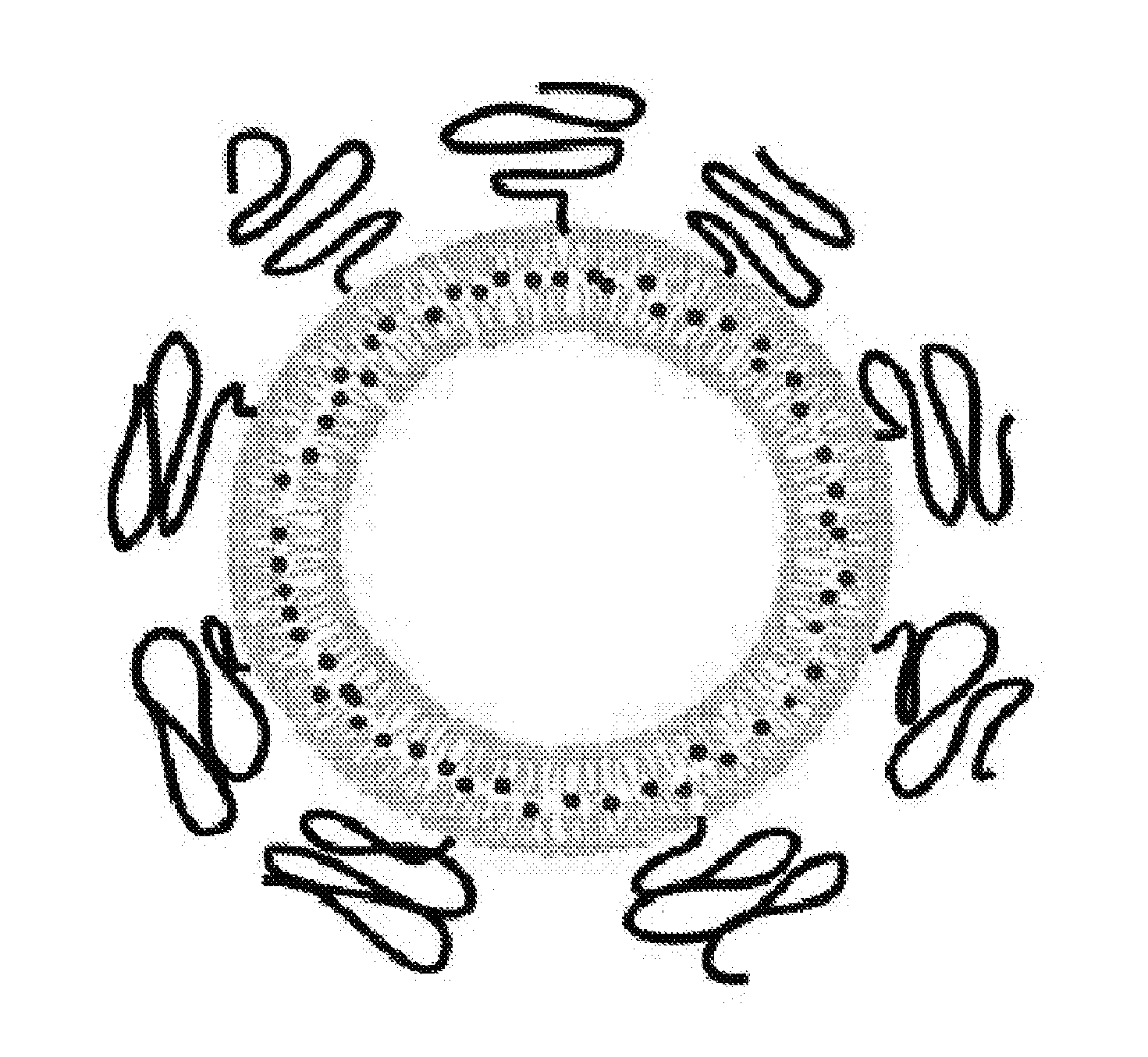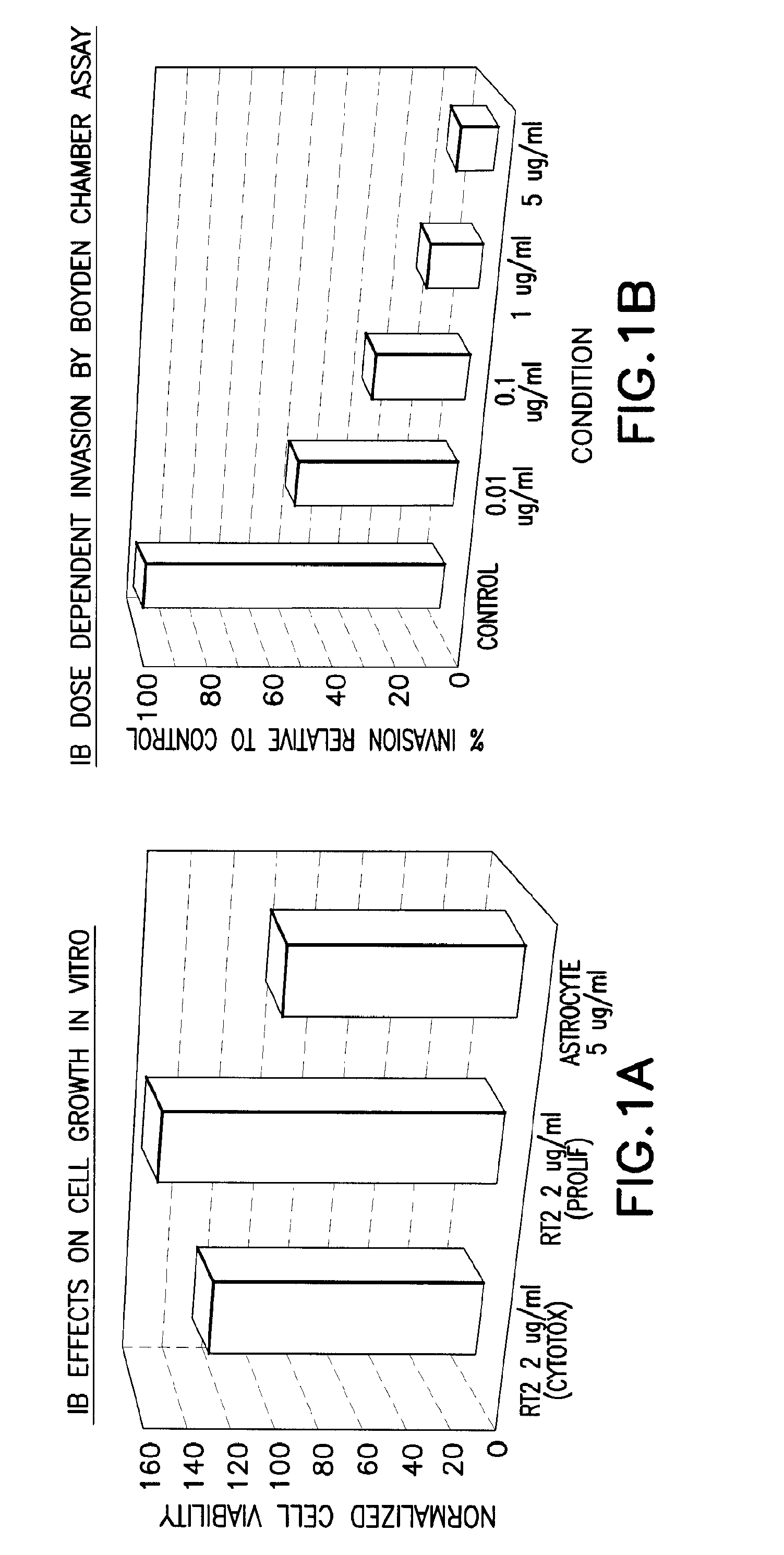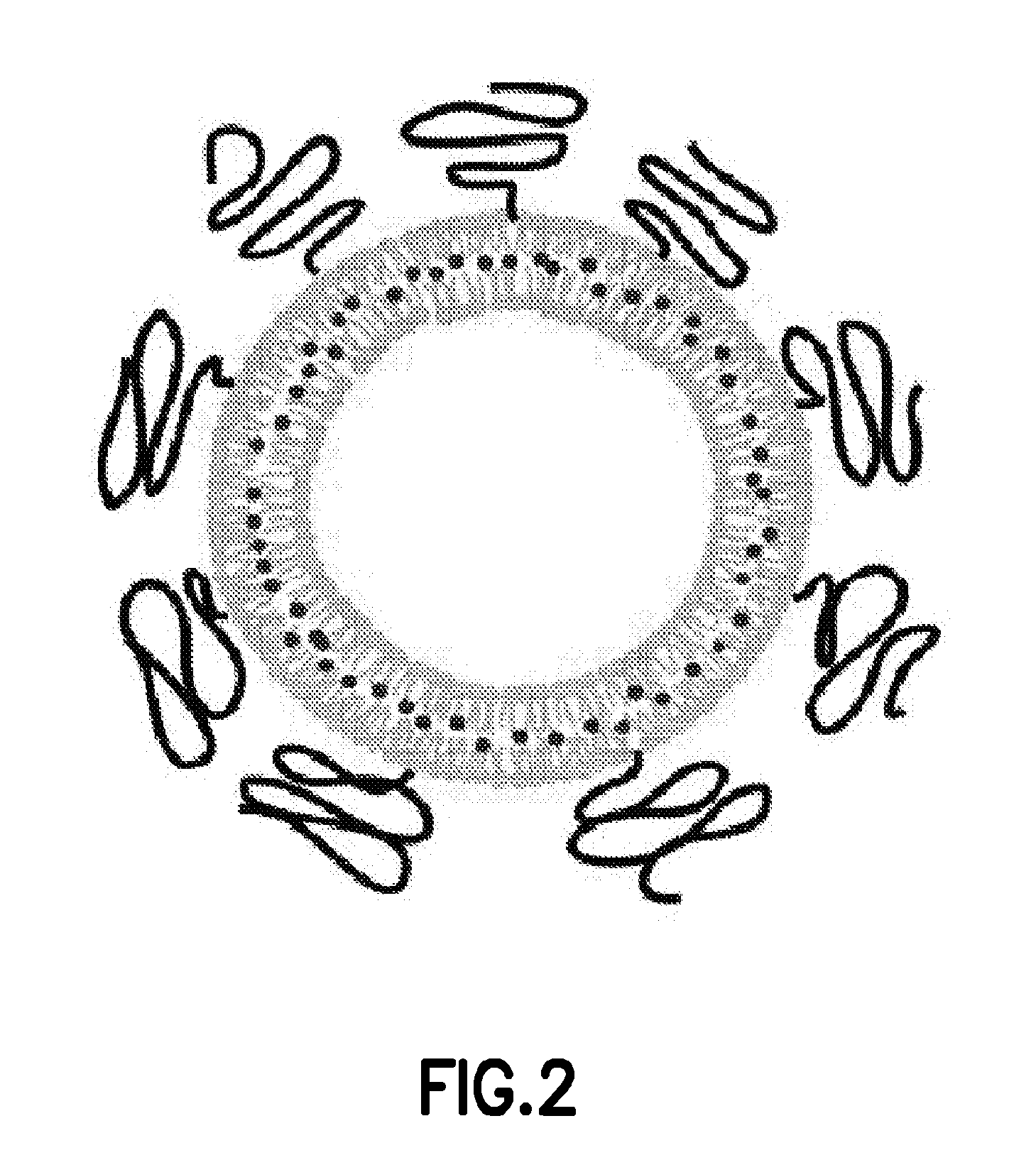Nanocarrier therapy for treating invasive tumors
a tumor and invasive technology, applied in the field of anticancer drugs, can solve the problems of poor prognosis, lack of available chemotherapeutic agents, invasiveness of brain tumors, etc., and achieve the effects of inhibiting tumor invasion and tumor metastasis, increasing pore size, and increasing permeability
- Summary
- Abstract
- Description
- Claims
- Application Information
AI Technical Summary
Benefits of technology
Problems solved by technology
Method used
Image
Examples
example 1
In Vitro Compound Screen
[0096]An aggressive rat astrocytoma cell line, RT2, was maintained in vitro. This cell line was used to test 24 compounds at varying concentrations in cytotoxicity and proliferation assays using CCK8 (Dojindo), a tetrazolium salt based assay. Compounds without detrimental effects on viability and growth were tested using the Boyden chamber invasion assay at 48 hours. Compounds were also tested for viability against astrocyte cultures using CCK8. Of these compounds, several were identified as anti-invasive. However, several compounds were toxic to astrocytes in culture and several were cytotoxic and not in fact anti-invasive. Several of these compounds are, like IB, triaryl methanes disclosed in PCT / US08 / 88495, and IB showed the highest anti-invasive properties of the triaryl methanes tested.
[0097]One compound, IB was determined to be anti-invasive while not cytotoxic and not antiproliferative. It also is benign to astrocyte co-culture making it safer for deli...
example 2
Preparation and Evaluation of Liposomes Containing Imipramine Blue
[0119]This example evaluated the effectiveness of IB-containing liposomes in a live rat model.
[0120]Nanocarrier Synthesis:
[0121]Liposomes were made from DSPC (85 mol %), DSPE-PEG (5 mol %, Avanti Polar Lipids)), and cholesterol (10 mol %, Sigma) by dissolving the lipids and 2 mg / ml of IB in ethanol. The solution was hydrated using phosphate buffered saline at 70° C. to yield liposomes. Liposomes were extruded to a size of 160 nm as assessed by dynamic light scattering. Unbound drug was removed via sepharose column separation and then diafiltrated to a final IB concentration of 3.5 mg / ml.
[0122]In Vivo Animal Studies:
[0123]For tumor inoculation, 8-10 week old week old Fischer 344 rats were anesthetized using 2-3% Isoflurane inhalant. A 1 cm incision to the skull was made and a 2 mm burr hole was drilled 2 mm lateral and 6 mm posterior to bregma. 250,000 cells were injected in 10 μl of Leibovitz media over a period of 10...
example 3
Further Evaluation of IB-Containing Liposomes
[0130]This example evaluated the effectiveness of IB-containing liposomes in a live rat model, at a slightly higher dosage of IB within the liposomes than was present in Example 2.
[0131]Nanocarrier Synthesis:
[0132]Liposomes were made from DSPC (85 mol %), DSPE-PEG (5 mol %, Avanti Polar Lipids)), and cholesterol (10 mol %, Sigma) by dissolving the lipids and IB in ethanol. The solution was hydrated using phosphate buffered saline at 70° C. to yield liposomes. Liposomes were extruded to a size of 160 nm as assessed by dynamic light scattering. Unbound drug was removed via sepharose column separation and then diafiltrated to a final IB concentration of 7-8 mg / ml.
[0133]Pharmacokinetics and Biodistribution Studies:
[0134]Animals were injected via tail vein with 20 mg / kg liposomal or free IB. Orbital blood draws were performed at intervals and blood collected, centrifuged, and serum read at 610 nm absorbance for pharmacokinetics. For biodistrib...
PUM
| Property | Measurement | Unit |
|---|---|---|
| size | aaaaa | aaaaa |
| size | aaaaa | aaaaa |
| concentration | aaaaa | aaaaa |
Abstract
Description
Claims
Application Information
 Login to View More
Login to View More - R&D
- Intellectual Property
- Life Sciences
- Materials
- Tech Scout
- Unparalleled Data Quality
- Higher Quality Content
- 60% Fewer Hallucinations
Browse by: Latest US Patents, China's latest patents, Technical Efficacy Thesaurus, Application Domain, Technology Topic, Popular Technical Reports.
© 2025 PatSnap. All rights reserved.Legal|Privacy policy|Modern Slavery Act Transparency Statement|Sitemap|About US| Contact US: help@patsnap.com



